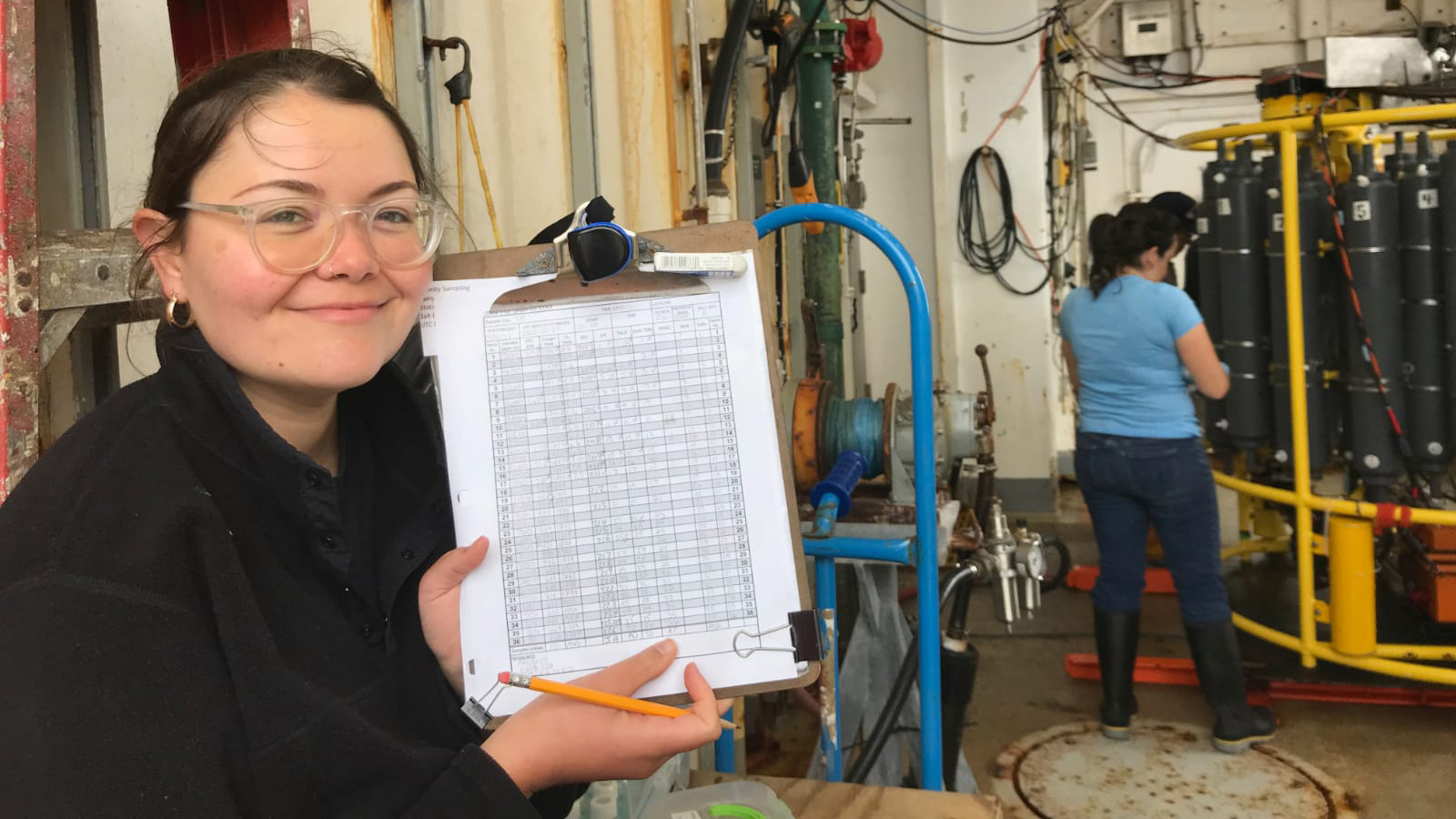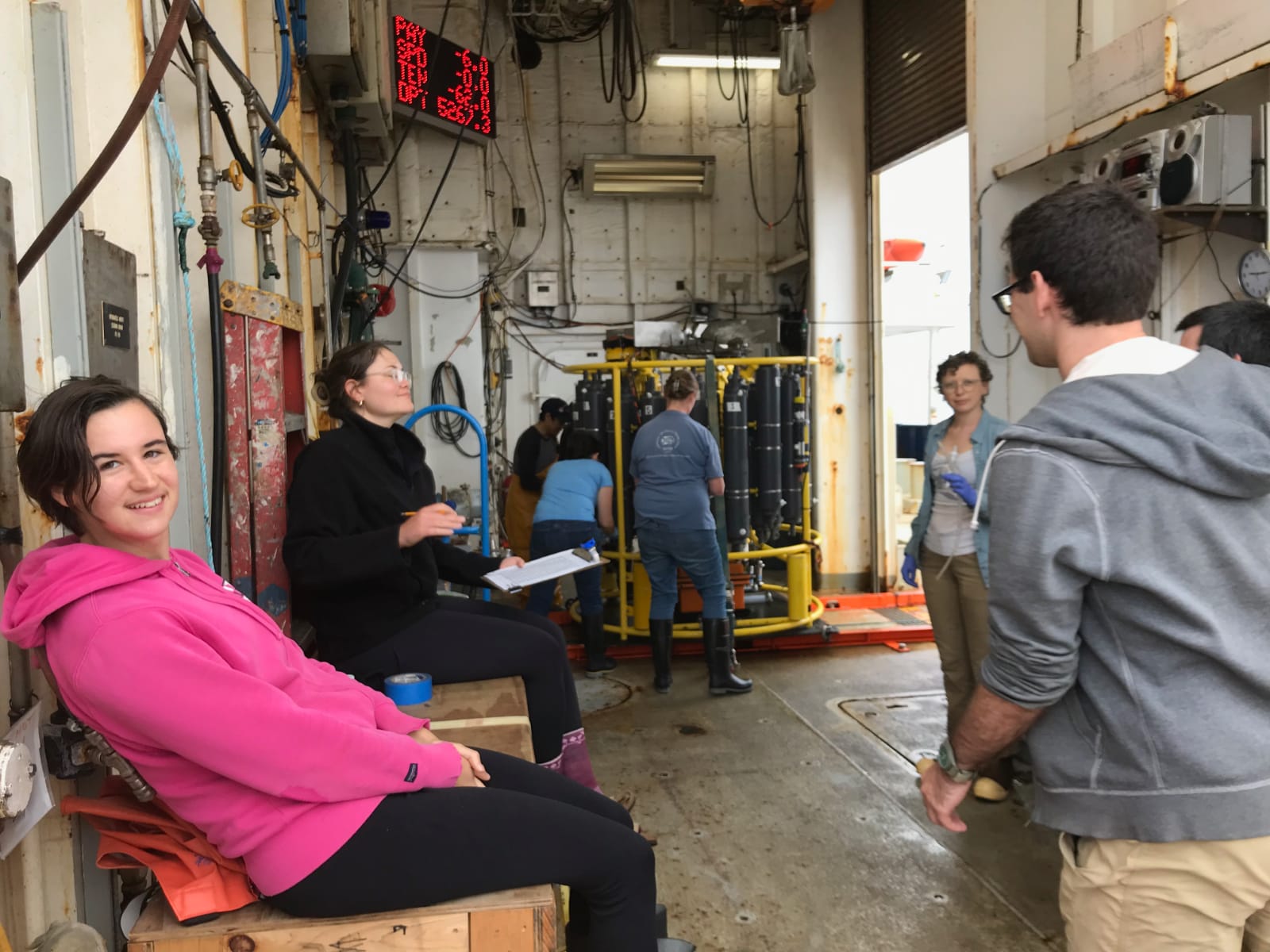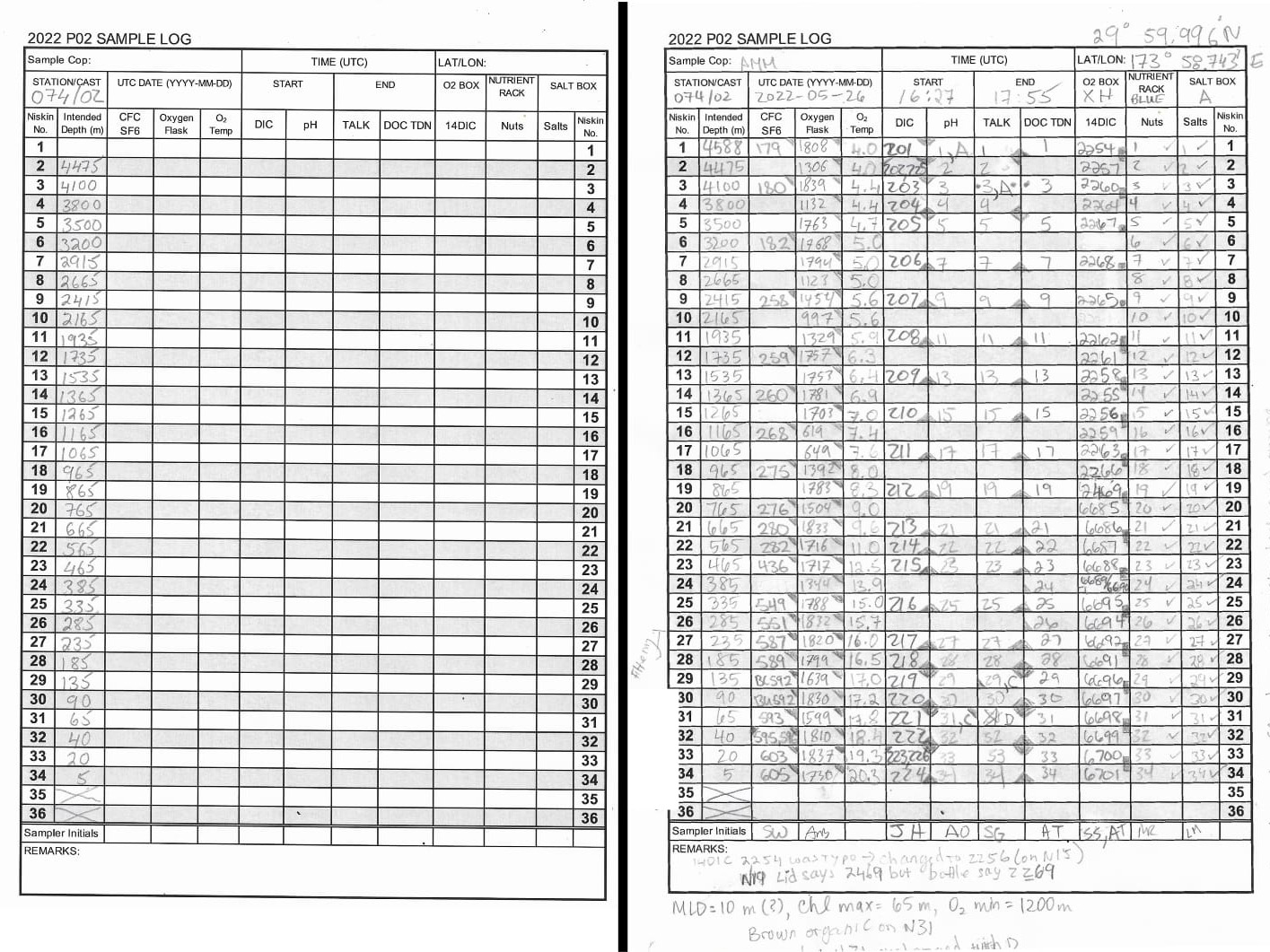8 Jun 2022
Hi! Alison Macdonald here. I am Chief Scientist for this expedition along 30°N in the Pacific. As chief sci I have lots of responsibilities, but my favorite task is sample copping. (Image 1)

Image 1: Here is our CTD-watch student/sample cop, Lauren with a sample log in hand
Being the sample cop is like being a music conductor, except that rather than telling musicians what beat to keep and when to come in, you tell samplers when they can start sampling and what order they need to do it in. (Image 2)
It begins at the console where our CTD-watch trips bottles on our rosette at specific depths. These depths are transferred in pencil (in case they change) to a sheet called a sample log. Then, for each of the different types of samples, a person comes to our computer room to write down the number of the smaller container they will be using to take water from each of the big 10L Niskin (aka Bullister) bottles on the rosette (see example logs).
In Image 3, you can see a sample log example. On the left is a sample log after it has been set up by the CTD-watch with the depths (in meters) at which they will trip bottles. On the right is the same sample log after all those doing the sampling have first included the numbers of their containers and after all the sampling began. (Note all the marks on the page indicating the start and end of each person’s sampling on each Niskin.)

Image 2: We have lots of groups measuring lots of different water properties on this cruise. The sample cop communicates with all of them

Image 3: Sample log example
Now for the fun part. The rosette comes up on deck and sample cop (starting with the measurement of the gasses which can be contaminated by the sampling process itself) begins.
“CFCs you’re up”, says the sample cop. “1 7 9 on 1”, responds the person taking water to measure CFCs (ChloroFluoroCarbons – used to be used in refrigerators and spray cans). On my shift this is often Sidney. I check the log and seeing her number is correct, I reply with “CFCs 1 7 9 on 1”. Sidney opens Niskin 1 to take a sample with her syringe numbered 179, while I make a mark on the log (in the image, this is a little line in the upper right corner of the CFC-SF6 column. When Sidney is finished, she says “CFCs done on 1.” I make a second mark on the log (in the image shown I have filled in a little dark triangle in the upper right corner).
Next is oxygen. On my shift, it’s Andrew. He says “1 1 6 8?” I check the log, make a mark, and reply “Oxygen 1 1 6 8 on 1 – stale bottle,” telling Andrew that the Niskin has already been opened. When Andrew is done, he will call out a temperature than must be written down immediately in case it is forgotten. “4.0” (that’s in degrees centigrade and it was the temperature of the water in the Niskin tripped at the deepest depth in the example, 4588 m). I reply as I write it down, “4.0 on 1.” Then Julian sampling for DIC (Dissolved Inorganic Carbon) says “2 0 1 on 1 DIC” and Sidney says “1 8 0 on 3?” I check and say “201 on 1 – DIC. Go ahead 1 8 0 on 3” and Andrew says “1 3 0 8?” That’s “1 3 0 six on 2, fresh bottle” and now we have three people sampling and I am hurrying to make marks. As soon as they move forward, pH says “1 and A on 1.” If Sidney gets too far ahead, I make her wait. If Julian skips a Niskin like Sidney did, he’s not allowed to go ahead of Andrew and also has to wait.
It’s organized chaos – I’m a traffic cop at a 10-way intersection. It goes on this way through (on this cruise) CFCs, Oxygen, DIC, pH, Alkalinity, DOC, 14C, Nutrients and Salts usually on 36 Niskins. Sometimes it’s a lot of voices loudly, or not loudly enough, stating lots of numbers while other conversations go on in the background. A cacophony. I can’t listen, reply and write fast enough. I shout, “Wait! Wait! Wait! Stop!!” And everyone stops. Silence… and then we start again “Alk done on 25. Sidney, take a breather. Oxygen 1 6 3 9 on 29. DIC done on 27. pH 27 on 27. 6 6 8 8 on 23 14C. Nuts done through 20. Salts 14 on 14”…
